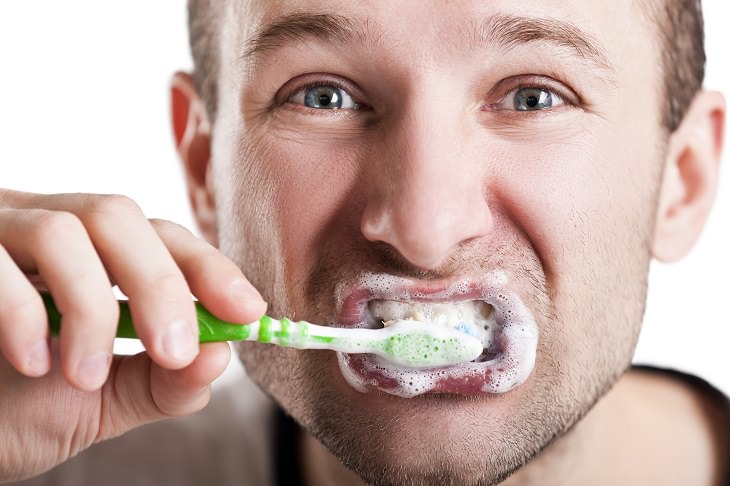Cavity Symptoms You Shouldn't Ignore
Cavities are the second-most common health
issues in the US, with over 3 million new cases every year, but how can
you tell if you have one or if one is developing? Well, luckily for you,
the following post reveals 8 indications that you have a cavity.

1. Persistent Toothache and Pain

A toothache or severe pain often signals a developing cavity, especially
when the damaged tooth comes into contact with something else. Eric
Klein, DDM, says that “pain is often a symptom, and pain can be in the
gums below the tooth or in the tooth itself. Sometimes you have a sharp,
acute pain or it may be a dull, throbbing pain, and both are signs of a
cavity.”
2. Pain When Chewing Food
Dr. Klein says that “if you start chewing on any food and something
hurts, it could be because the tooth has a crack in it or because
there’s a cavity.” If you feel a sharp, sudden pain after biting into
some food, the nerve in your tooth might be infected and in the process
of decay. Touching the afflicted area can help you gauge the severity of
your pain and whether or not you need to go and see a dentist. If you
can’t touch the tooth without shuddering in pain, schedule an immediate
appointment with your dentist.
3. Bad Breath or a Bad Taste in Your Mouth


Cavities are basically small, infected
holes that develop in teeth, making them an ideal breeding ground for
bacteria and a place where food can get stuck. “A cavity is caused by
acid and sugar breaking a hole in the enamel, and then bacteria can
enter that hole,” explains Dr. Klein. “Bacteria can cause odor and leave
a bad taste in your mouth.” Bad breath can also be a sign of gum
disease, caused by a build-up of plaque on the teeth that irritates the
gums. If you notice constant bad breath or a bad taste in your mouth,
contact a dentist to further evaluate the source of the bacteria.
4. Increased Sensitivity to Temperature
If you’re among the 80% of people over the age of 17 who have had at
least one cavity, you might have experienced a strange sensitivity to
temperature in the infected tooth. You might have extreme sensitivity to
hot or cold liquids and foods, making eating and drinking an unpleasant
experience. “Every tooth has a nerve inside it, and it also has blood
supply to help the tooth grow and function. When a cavity gets larger
and closer to that nerve, it can sense the change in temperature
easier,” says Dr. Klein.

5. Bleeding When Brushing

Cavities can cause bleeding when brushing due to gum irritation from the
damaged nerve. Recurrent bleeding might be a sign of a gum disorder or a
symptom of a deep cavity. “If you have a big cavity at the gum line,
you might catch food in the cavity and the can cause gum issues,” says
Dr. Klein.
6. Dark Spots on the Teeth and/or Discoloration
While some cavities appear as abscesses or holes, others look more like
spots or stains on the surface of the infected tooth. Brow, black, or
white spots are often signs of tooth decay, though they can also be
signs of natural stains. If a spot is soft or sticky, it’s likely the
symptom of a growing cavity. In some cases, cavities can cause the
entire tooth to darken and increase its likelihood of breaking. If you
notice discoloration or spots in your teeth, visit a dentist to have the
stains evaluated.
7. Pain Due to Changes in Pressure


If you have ever experienced a toothache
when taking off on a plane or while deep-water scuba diving, it’s very
likely that it’s due to a cavity. Changes in air pressure can irritate
the nerve within an infected tooth, causing dull or severe pain. If you
feel an unfamiliar pain in these types of situations, have a dentist
examine the tooth to catch the cavity before it grows. Filling a cavity
during its early stages will prevent the decay from worsening.
8. Swelling in Certain Parts of the Gum
Sometimes, swelling of the gums is an indication that you have a cavity.
Dr. Klein says that “if you have a really deep cavity, it makes the
nerve sick or die, and that causes an infection in a nerve that causes
swelling.” You should visit your dentist if you notice swelling in a
specific area of the gums as this might be a sign of a cavity or gum
infection.